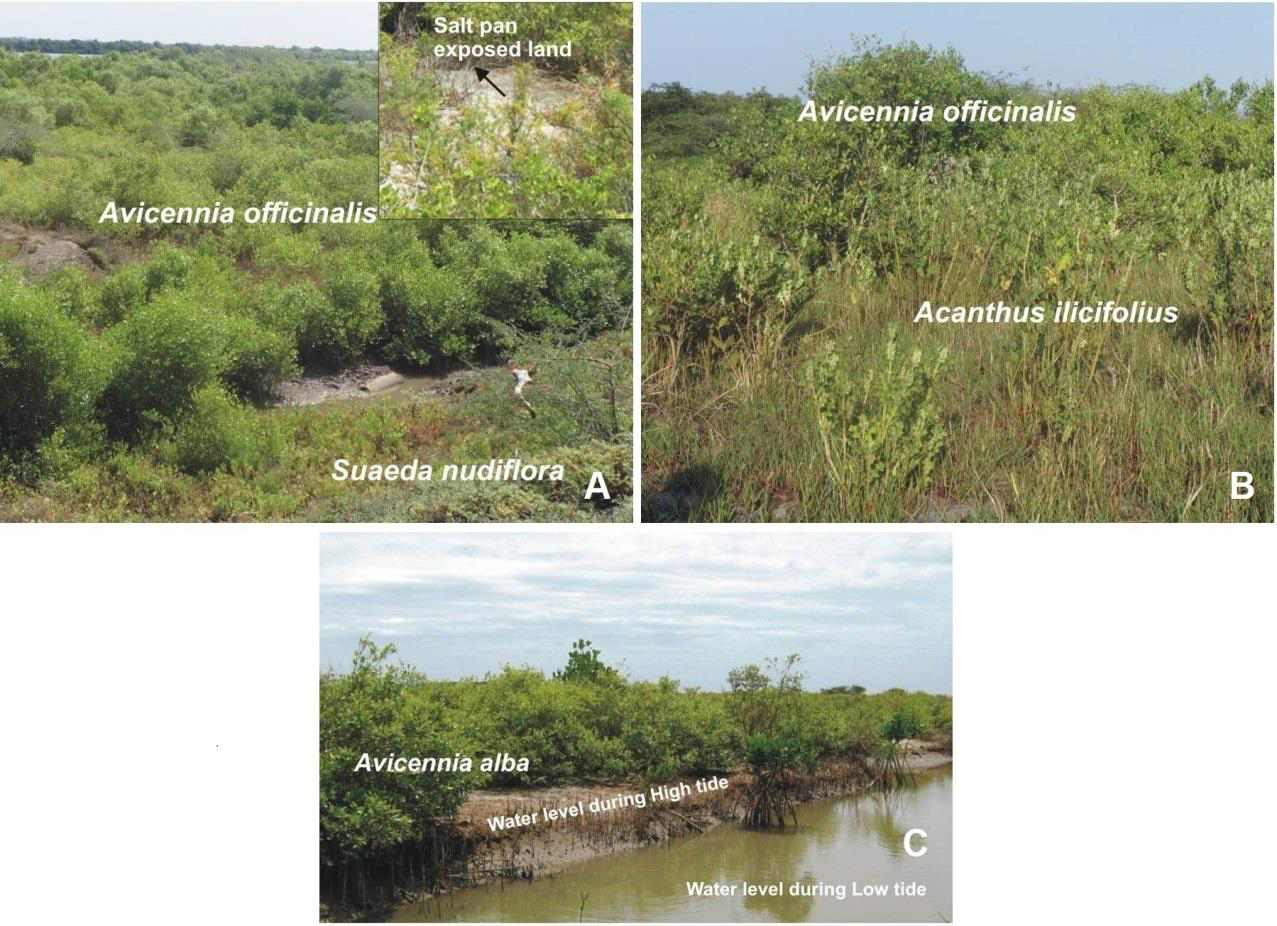Tropical Plant Research
An International Journal by Society for Tropical Plant Research
2016, VOLUME 3 ISSUE 1Pages: 78-86
Low Na/K ratio in the leaves of mangroves mitigates salinity stress in estuarine ecosystem
Anjum Farooqui*, Ranjana and Yogesh Joshi
Abstract:
Plants have their own genotype which allows them to absorb, accumulate or exclude nutrients particularly sodium (Na) and potassium (K) through their root system that are essential for physiological activities and growth in coastal wetlands. Dominant mangrove species such as Avicennia alba, A. officinalis, A.maritima, Suaeda monoica, S. nudiflora, S. maritima and Acanthus ilicifolius were selected from Andhra Pradesh coast to observe the sodium (Na) andrnpotassium (K) accumulation in the leaves and the salinity in the aqueous soil solution in their respective rhizosphere. Results reveal that only Acanthus ilicifolius grew in low soil salinity of ~0.5 to 1.2 ppt. and are moderate accumulators of Na and K in the leaves. Avicennia alba is highly sensitive to salinity due to its high Na/K ratio in leaves. A. officinalis and A. marina, S. nudiflora and S. maritima show low Na/K ratio and are tolerant to salinity stress. Acanthus ilicifolius and Suaeda monoica show moderate ratio of Na/K in their leaves. The leaf epidermal modifications through salt glands (Avicennia and Acanthus spp.) and prevention of water loss by non-gladular trichomes as in case of Avicennia species helps in mitigation of salinity stress but their affinity towards K uptake and translocation to leaves primarily regulates the physiology and growth of plants to tolerate or succumb to salinity stresses. Except for Suaeda monoica both S. nudiflora and S. maritima are non-accumulators of Na and K showing their low ratio in leaves. K is an essential component in the leaves to mitigate increased salinity in the ecosystem despite the leaf epidermal morphological adaptations to exude excess salt. Plants which are efficient in K absorption are more tolerant to salinity stress while others are comparatively sensitive.
Plants have their own genotype which allows them to absorb, accumulate or exclude nutrients particularly sodium (Na) and potassium (K) through their root system that are essential for physiological activities and growth in coastal wetlands. Dominant mangrove species such as Avicennia alba, A. officinalis, A.maritima, Suaeda monoica, S. nudiflora, S. maritima and Acanthus ilicifolius were selected from Andhra Pradesh coast to observe the sodium (Na) andrnpotassium (K) accumulation in the leaves and the salinity in the aqueous soil solution in their respective rhizosphere. Results reveal that only Acanthus ilicifolius grew in low soil salinity of ~0.5 to 1.2 ppt. and are moderate accumulators of Na and K in the leaves. Avicennia alba is highly sensitive to salinity due to its high Na/K ratio in leaves. A. officinalis and A. marina, S. nudiflora and S. maritima show low Na/K ratio and are tolerant to salinity stress. Acanthus ilicifolius and Suaeda monoica show moderate ratio of Na/K in their leaves. The leaf epidermal modifications through salt glands (Avicennia and Acanthus spp.) and prevention of water loss by non-gladular trichomes as in case of Avicennia species helps in mitigation of salinity stress but their affinity towards K uptake and translocation to leaves primarily regulates the physiology and growth of plants to tolerate or succumb to salinity stresses. Except for Suaeda monoica both S. nudiflora and S. maritima are non-accumulators of Na and K showing their low ratio in leaves. K is an essential component in the leaves to mitigate increased salinity in the ecosystem despite the leaf epidermal morphological adaptations to exude excess salt. Plants which are efficient in K absorption are more tolerant to salinity stress while others are comparatively sensitive.

Fig.: A, Avicennia marina and A. officinalis along with Suaeda nudiflora and S. maritima on highlands that are often inundated by tides but not regularly. Inset, showing interspersed salt accumulation on the surface; B, Avicennia officinalis along the back water channel towards land and Acanthus ilicifolius on highlands; C, Avicennia alba, regularly inundated by high tides twice a day (near shore).
| 0 | 1 | 2 | 5 | 7 | 9 | 0 | 5 |


